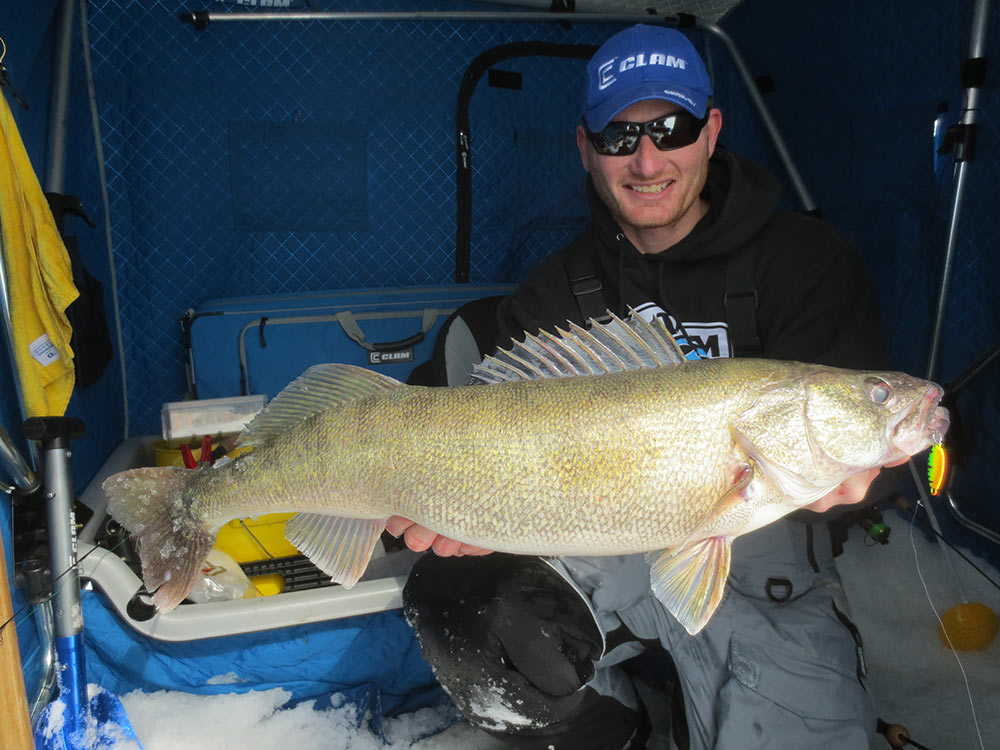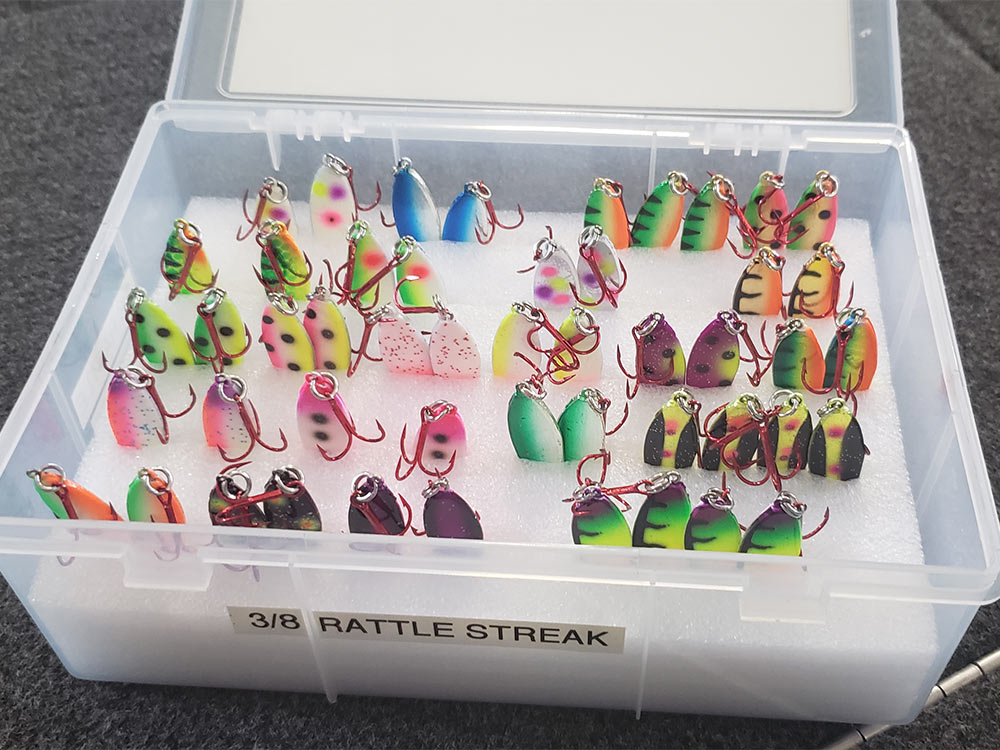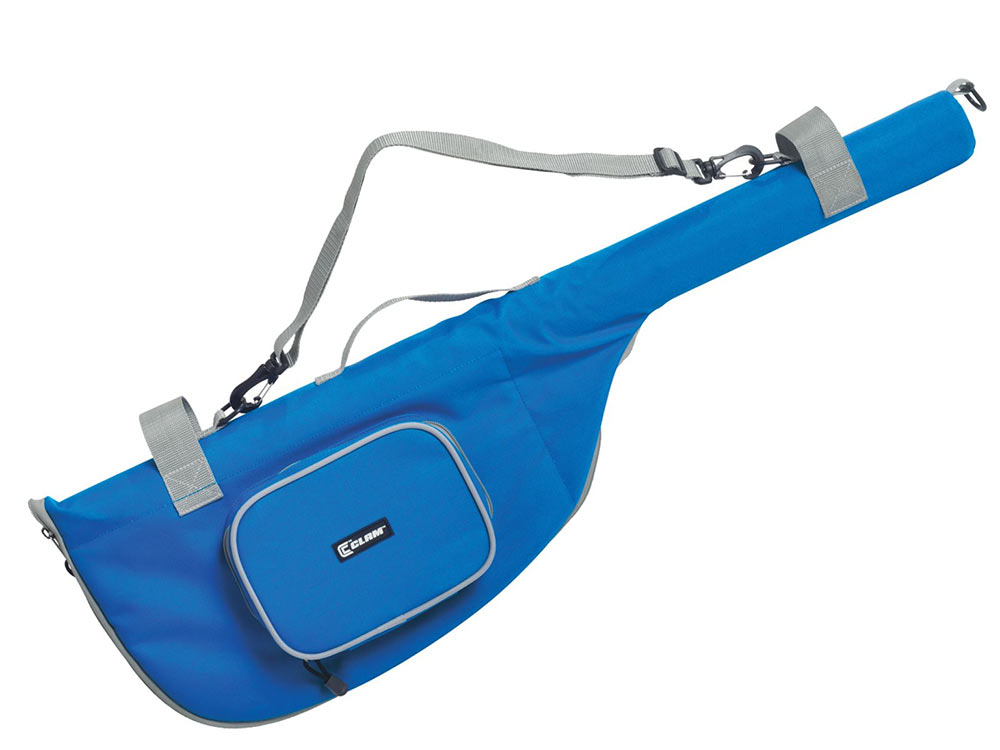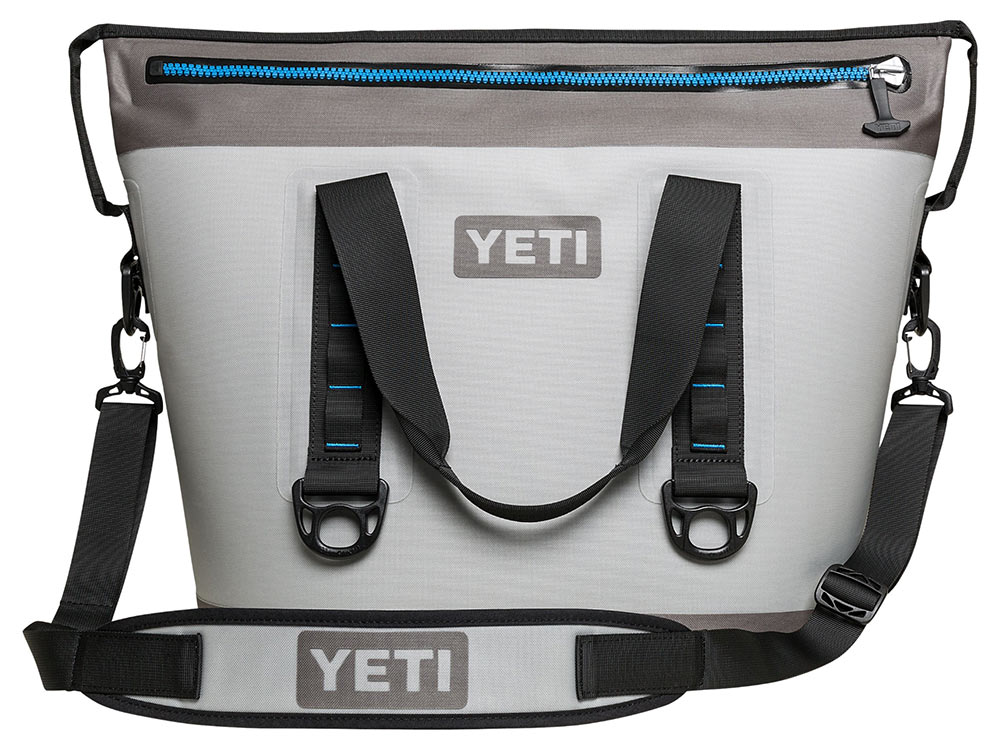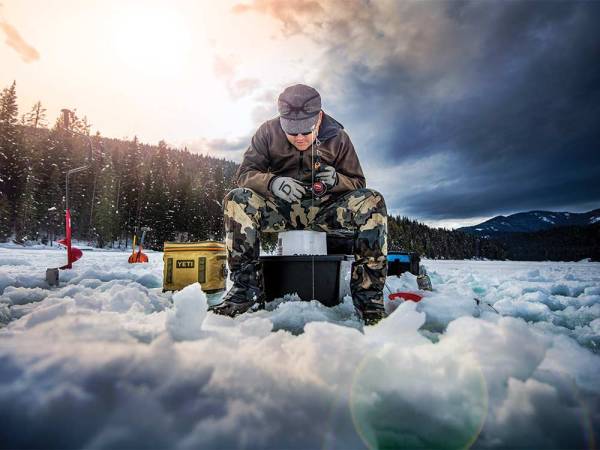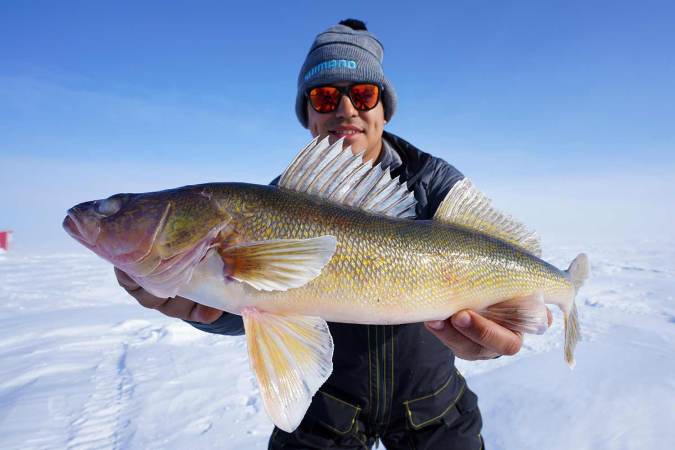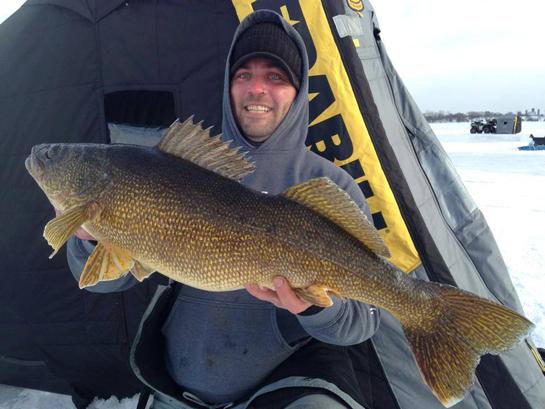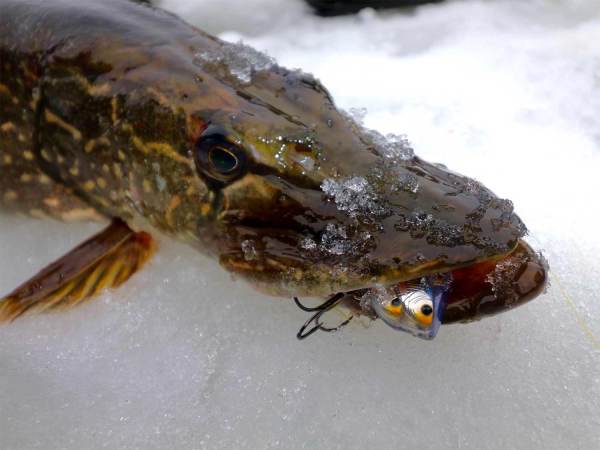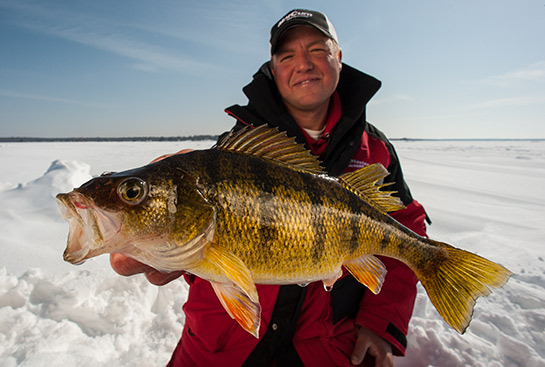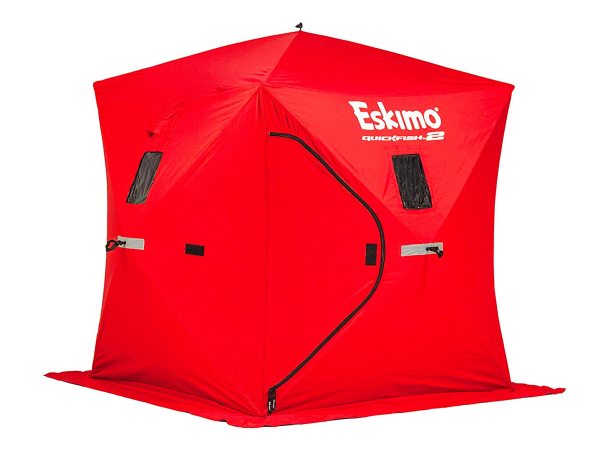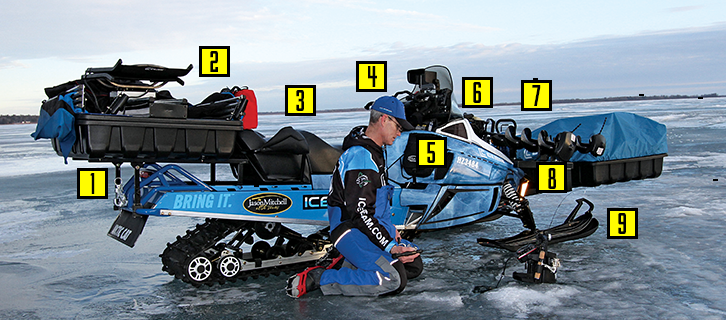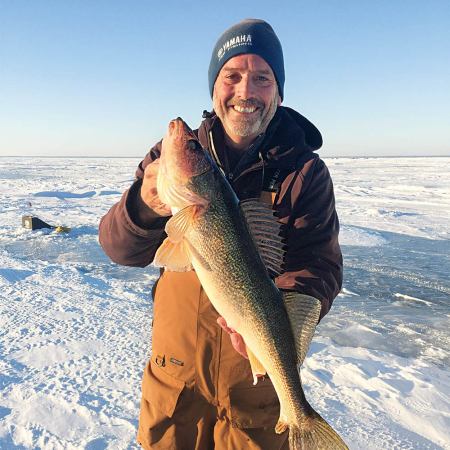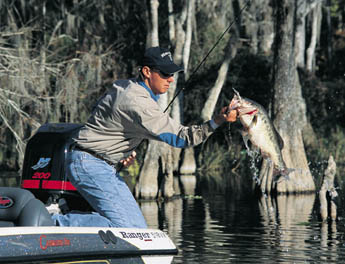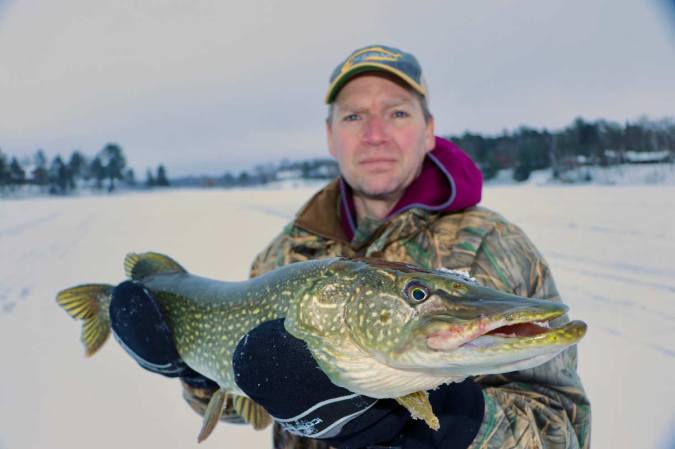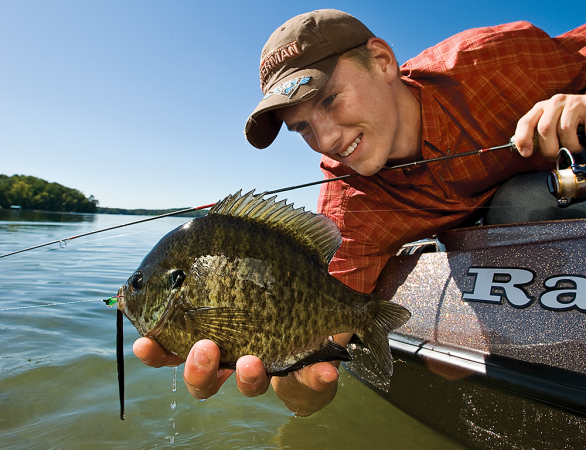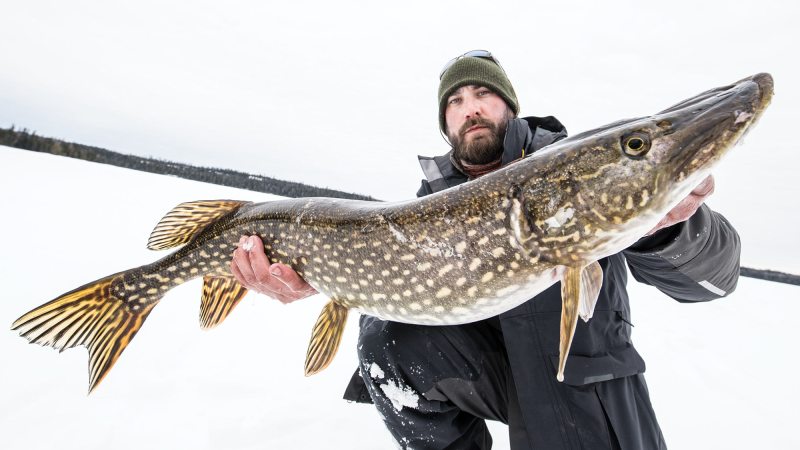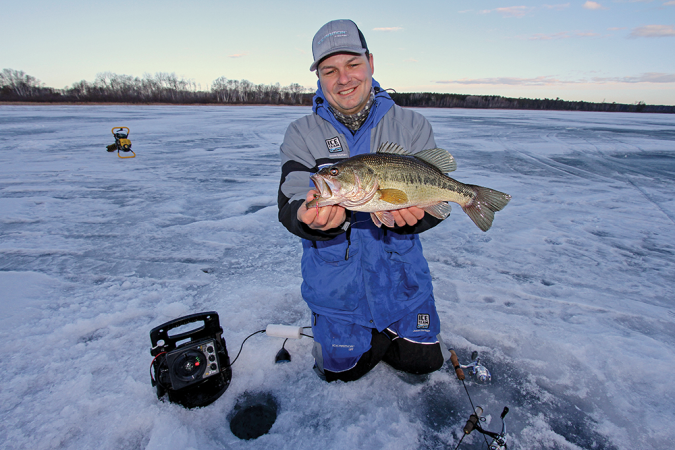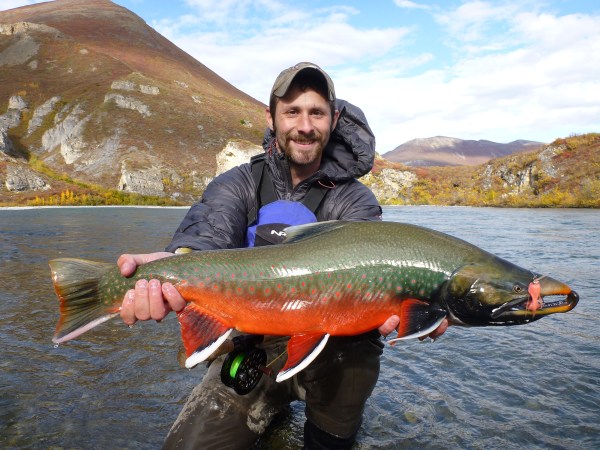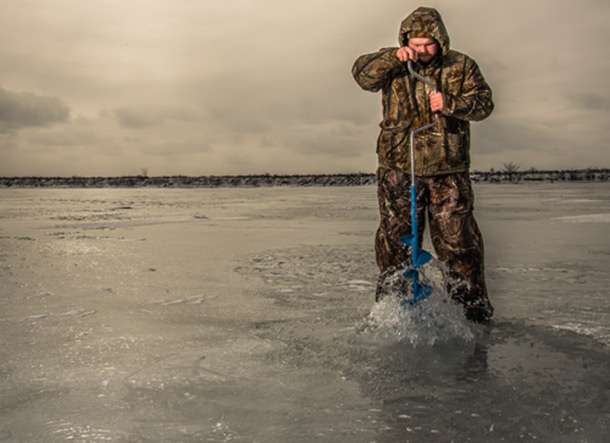We may earn revenue from the products available on this page and participate in affiliate programs. Learn More ›
It’s amazing how far ice fishing tactics and gear have come in a relatively short amount of time. Just think about how we get through the ice in the first place, for example. The days of using a spoon auger to drill holes have long been replaced thanks to the advent of lightweight, electric augers. But even the latest and greatest tools and gear are susceptible to damage, because let’s face it—ice anglers are known to brave some of the nastiest conditions if there’s even a remote chance of drawing a tight line on a fish. If I fished through fifty more hardwater seasons, I will always remember looking back from my ATV to see my buddy’s shack flip over and rip in two, and the wind stringing out all of his gear, fish, and bait for what seemed like a mile. Since then, I’ve always felt the best way to outlast Mother Nature on frozen water is to take care of my gear, whether that’s while transporting it on the ice, or placing it in offseason storage. That said, here are a few simple hacks I’ve learned over the years that will allow you to provide the best ice-fishing gear protection for little to no cost.
A box full of ice lures can easily add up to a mortgage payment. Aside from the cost, many of these local or long since discontinued gems are worth their weight in gold. When I started fly fishing, it only took a few trips to figure out that putting lures in a traditional tackle box meant I’d likely open it to a gob of unpainted lures after colliding and scratching through the season. A trip on rough ice is not a smooth ride, so anything that isn’t secured, tumbles around like loose change in a dryer. Even if you’re blessed with smooth ice, you can spend several minutes locating and grabbing a single spoon or jigging rap and shaking off the other five or six attached to it.
Fortunately, a simple solution is a foam bottomed spoon box like the ones available from Clam. Though they’re typically marketed for open water spoons, these padded cases keep lures separated and protect the painted finishes. Available from several different manufacturers in any number of sizes and capacities, these inexpensive boxes make it easy to add years of life to your favorite lures. Simply stick a spoon or jig into a foam slot, shut the lid, and forget about it. If you don’t want to buy a box, simply take a large piece of open cell packing foam and shape it to fit inside your favorite lure box or compartment. Cut a few slits in the foam with a utility or X-Acto knife slightly smaller than the size of the lure you plan to insert into the slot so it doesn’t slip out, and you’re all set. You can throw the foam into your tackle box, and swap it out for another on a whim or as conditions necessitate.
You haven’t felt pain until you hear a bucket full of ice-fishing rods snap like a handful of kindling breaking over your knee. Rods are easily the most valuable and delicate pieces of ice gear, and they’re also expensive. For that reason, and to protect rods from the elements, my days of storing rods and reels inside a five-gallon bucket are over. Gun style rod cases have gained some popularity in large part because they offer excellent protection, but the capacities are usually low, and they’re difficult to fit into shacks or transport. For those reasons, I recommend soft-sided rod lockers or rod tubes for storing and transportation.
You can easily carry a soft-sided case, tie it to a machine, or stash it in a shack. Much like the aforementioned lures, anything that rides along the ice or is free to bounce around, doesn’t usually have a long life. So, fill up the zippered compartments on the outside of a soft-sided rod locker with rags to add protection. This will prevent reels from being in direct contact with your snow machine, the ice, or any other hard surface. It also means you’ll have the benefit of extra rags on the ice, which is never a bad thing.
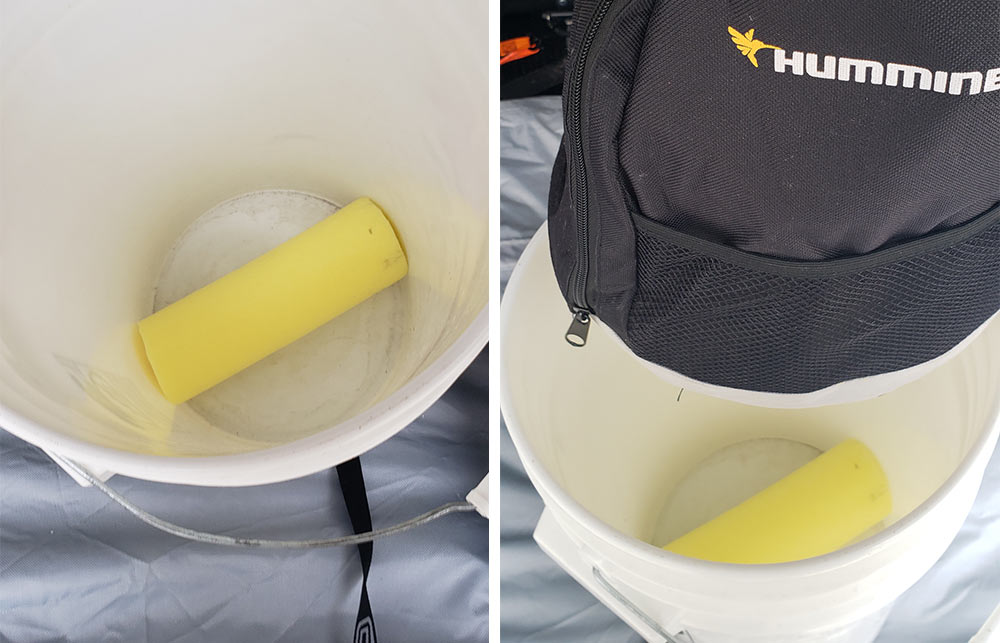
Once you fish with a flasher unit, you’ll never want to be without one. At the risk of starting a debate, most ice anglers would just as soon go home before trying to fish without electronics. The fact anglers rely on the devices so much, and the fact a unit can be a little pricey, is even more reason to give them some extra TLC.
An empty, clean five-gallon bucket easily holds nearly any sized flasher unit and the handle makes it easy to carry. On the ice, the bucket can act as an extra seat. You’ll be able to keep your electronics out of the slush and elements to a point, but the real damage comes from jostling around as you move from point A to point B. To help minimize any movement in the bucket, cut off a short piece of foam from a large pool noodle and place it in the bottom of the bucket to ensure your electronics don’t make direct contact with the ice or hard surface. You can use other light, spongy materials to accomplish the same effect, but over the years I’ve learned few are as light, inexpensive and readily available as a pool noodle. Because of this simple hack, I haven’t broken any electronics in years. If you need more space for your device, try using a six- or seven-gallon bucket. The added height makes it easier to store larger or more items, and they are more comfortable as a last-minute seat replacement.
I rely on a cooler more in the winter than I do in the summer. Today’s high quality coolers have much more insulation, and that insulation works both ways. So in the winter months, I use a cooler to keep things from freezing (like my lunch, auger batteries and camera equipment). For added warmth, place a small hand warmer in your soft-sided cooler. It’s a great way to keep batteries from slowly discharging and can protect expensive electronics equipment from either breaking or malfunctioning.
If you can afford it, get a quality soft sided cooler that has a waterproof zipper to keep your gear dry and secure. Plus, your gear will stay protected inside the cooler. The extra utility I get out of my high-end cooler in the winter months, makes the high-end cost of that cooler more justifiable.
Read Next: Yellow Perch Ice-Fishing Tips from a Pro
Along the same lines, I keep a quality cooler in my trailer to keep caught fish from freezing before I have a chance to fillet them. The heavy insulation keeps them from freezing (or spoiling) so you can fillet them on your schedule. On ice-fishing road trips, I do the same thing with groceries I don’t want turned into a frozen block, which is something that was just not possible with coolers back in the day.
The outdoor elements during the winter months, especially ice itself, are hard on gear. I think you’ll find these simple hacks are easy to and inexpensive, but best of all, they’ll protect your gear and let you focus on fishing. If you have a simple ice-fishing hack, please share it in the comment fields below.
